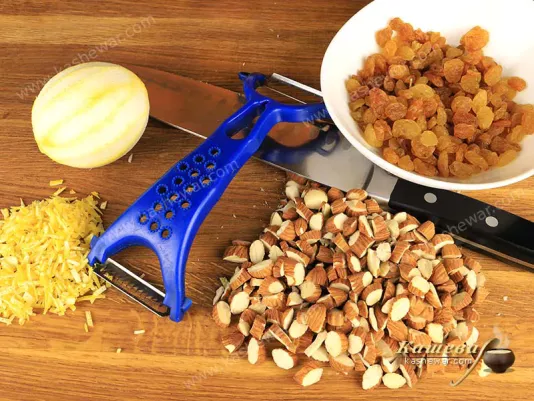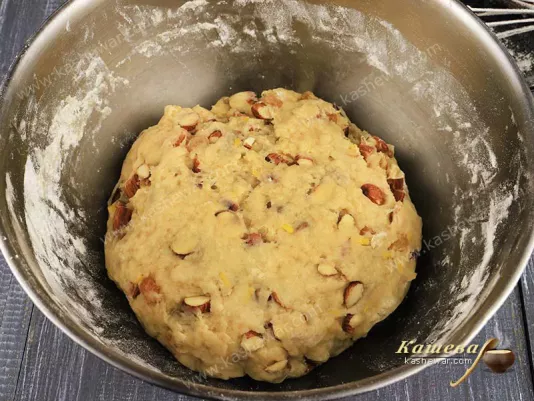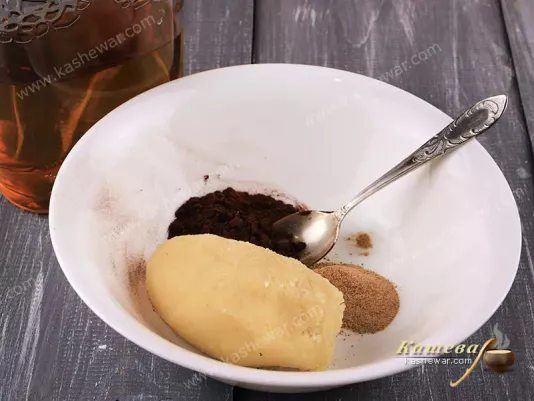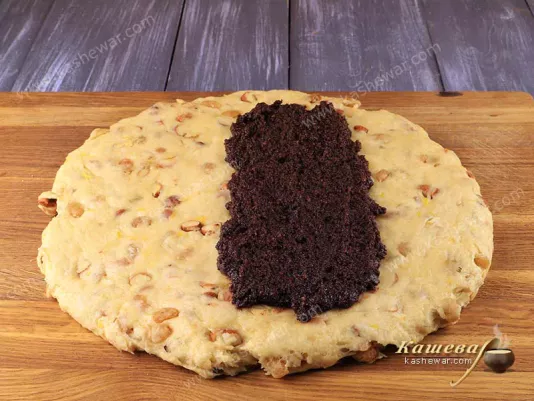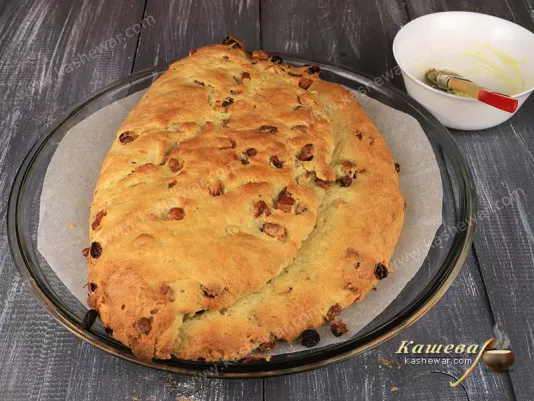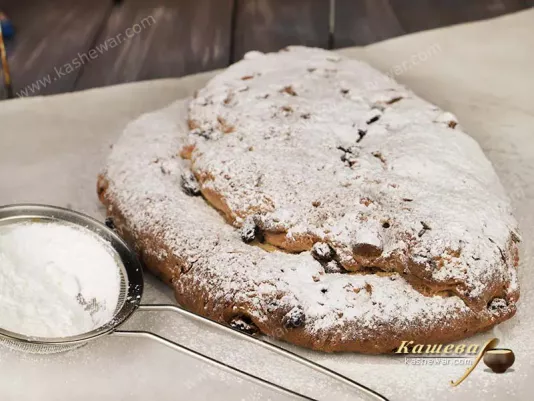Christmas Stollen (Weihnachtsstollen)
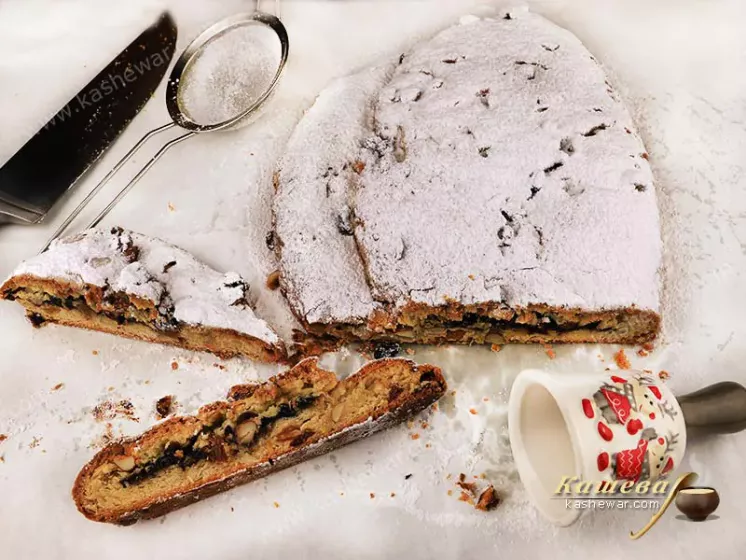
2 hours Recipe Yield:
1 kg Difficulty:
Medium recipe
Some may find Christmas Stollen a bit too complex – both because of the number of ingredients and the process itself – but it’s well worth the effort. There are many variations of this pastry: without marzipan, with poppy seeds, apples, or candied ginger. Marzipan can be used in different ways – as a filling or mixed directly into the dough. Stollen is usually prepared a few weeks before Christmas, then wrapped in baking paper, covered with foil, and stored in the fridge until the holiday.
Ingredients for Christmas Stollen Recipe
How to Make Christmas Stollen
Tips for Making Christmas Stollen
-
To make the stollen aromatic and long-lasting, it’s best to soak the raisins and other dried fruits in cognac or rum beforehand. This makes them juicier, adds flavor to the dough, and helps them preserve well during storage.
-
It’s easier to roll the marzipan filling into a log and place it inside the dough sheet. This ensures even distribution, prevents leakage during baking, and gives each slice a gentle almond-nutty note.
-
Don’t rush to taste the stollen right after baking. Wrap it in parchment and foil, and leave it in a cool place for 2-3 weeks. This time allows the flavors of the spices, butter, and dried fruits to blend, giving the stollen a deeper and truly festive taste.
-
Avoid adding too much flour while kneading. Stollen dough should remain soft and slightly sticky – otherwise, the finished pastry may turn out dry.
-
If using homemade marzipan, make sure it’s soft enough. Hard marzipan won’t spread evenly and could affect the dough’s structure.

